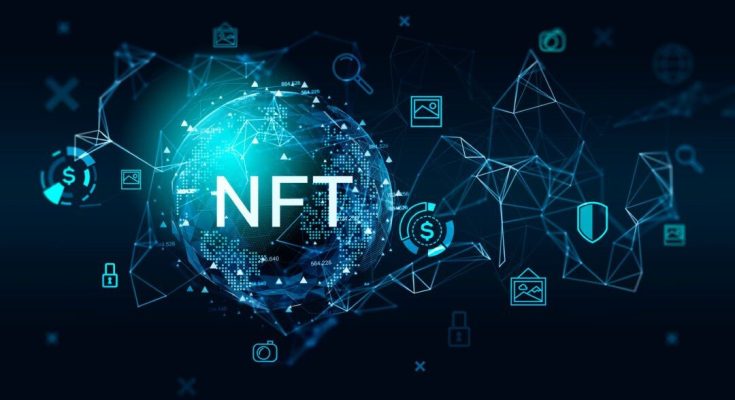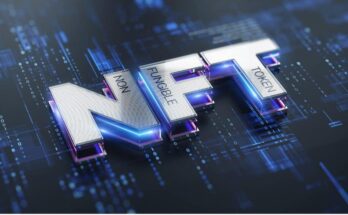Imagine paying a fair price for a piece of digital art online and receiving a special digital token that verifies your ownership of the purchase. Isn’t that something to be wished for? Well, owing to NFTs, that facility is now available.
The world of digital art and collectibles is now flushed with NFTs. NFTs are currently positioned as the digital alternative to collectibles, much as everyone assumed that Bitcoin was the digital replacement for cash. As a result of the enormous sales to a new crypto audience, digital artists are witnessing changes in their lives.
You’ve come to the right site if you’re curious about NFTs and want to learn more about them. Let’s get started and find out what the hype is about!
What is NFT?
Non-fungible Tokens, or NFTs, are often generated using the same kind of coding as cryptocurrencies. These cryptographic resources are built on blockchain technology, to put it simply. They cannot be traded or exchanged similarly to other cryptographic assets.
The word “Non-Transferable” (NFT) clearly presents that it cannot be altered or substituted due to its distinctive qualities. Both fiat money and cryptocurrencies may be traded or swapped for one another since they are both fungible.
Prominent Features of NFT
- Digital Asset – NFT is a type of digital asset that uses blockchain technology that powers cryptocurrency to authenticate online collectibles like artwork, music, games, etc.
- Unique – It can’t be copied or otherwise tampered with.
- Exchange – Cryptocurrencies like Bitcoin are exchanged for NFTs on dedicated platforms.
How Does NFT Work?
It would help if you continued learning about an NFT’s operation now that you’ve made the first steps toward knowing what it is.
- NFTs are individual tokens with important information stored in them, and the bulk of them are on the Ethereum cryptocurrency’s blockchain, a distributed public ledger that keeps track of transactions.
- They may be purchased and sold much like other tangible art forms since the market and demand determine their worth.
- Because NFTs include distinctive data, it is simple to confirm and authenticate both the ownership of the tokens and the transfer of ownership.
NFT Examples
People are still getting to know the NFT world. Here are some examples of NFTs:
What is NFT Use?
NFTs are frequently used by individuals who enjoy collecting art and those who trade cryptocurrencies. It may also be used for other things, such as:
- Digital Content – The digital content industry has become the primary user of NFTs. By fueling a creator economy in which creators transfer ownership of their material to the platforms they use for promotion, NFTs increase the income of content producers.
- Gaming Items – Game developers have expressed a lot of interest in NFTs. NFTs can offer players different advantages. Typically, the only thing you can do in an online game is purchase goods for your character. When using NFTs, you can return your investment by selling the things after use.
- Investment and Collaterals – The infrastructure for DeFi or Decentralized Finance and NFT is the same. DeFi programs allow you to borrow money with the use of security. Together, NFT and DeFi investigate the possibility of utilizing NFTs as collateral instead.
- Domain Names – NFTs give your domain a name that is simpler to remember. Making an IP address more recognizable and valuable—typically based on length and relevance—these functions are similar to a web domain address.
What Drives NFTs Popularity?
NFTs have been present since 2015, but their popularity has recently increased for several reasons. The enthusiasm and normalcy of cryptocurrencies and blockchain-based frameworks come first and are likely the most evident development. The intersection of fandom, royalty economics, and scarcity rules goes beyond technology. Every consumer wants to take advantage of the chance to own distinctive digital material and keep it as a form of investment.
The material is transferred to the purchaser of a non-fungible token, yet it continues circulating online. An NFT can become more well-known in this way since its value increases with increased web visibility. The platform keeps a small portion of the proceeds when the item is sold. As a result, popular digital assets have the potential to provide recurring income as they are bought and sold over time.
When it comes to NFTs, authenticity is key. Thanks to the blockchain, digital collectibles have unique characteristics that set them apart from other NFTs and make easy verification possible. It is impossible to produce and distribute counterfeit collectibles since each can be linked to its original maker or issuer. And because they are all unique, they cannot be directly swapped with one another as cryptocurrencies may.
NFTs and Ethereum
NFTs are made possible by the Ethereum blockchain for several reasons:
- Trading NFTs might suffer big losses as compensation without the necessity for peer-to-peer networks.
- Because all Ethereum products have the same “backend,” NFTs may be easily purchased on one and sold on another.
- It is difficult to modify the data to fudge ownership once a transaction has been certified.
- Because Ethereum never shuts down, you can always sell your tokens.
Where Can I Buy NFTs?
After learning how NFTs work and their unique benefits over other cryptocurrencies, you may want to consider investing in NFTs. If so, you will need to get a few necessary things first, including:
- You will require a digital wallet to store your NFTs and cryptocurrencies.
- Next, you must buy some cryptocurrency, perhaps Ether, depending on the payment types your NFT provider supports. You may purchase bitcoins using services like Coinbase, OpenSea, Kraken, PayPal, etc.
- You may transfer your Bitcoin from the exchange to your wallet once you purchase.
Consider that many exchanges impose minor transaction fees on purchases of cryptocurrencies.
NFT Marketplaces
All that’s left to do is purchase NFT once your wallet is prepared. The biggest NFT markets at the moment are:
- Rarible – Rarible is a democratic marketplace that enables NFT issuance and sales by artists and producers. Holders can express their opinions on aspects like charges and community regulations.
- OpenSea – All you have to do to get started is establish an account on the official OpenSea website, then explore NFT collections to find new artists. This website is well-recognized for its enormous collection of collectibles and unusual digital goods.
- Foundation – To submit their artwork on this platform, artists must either obtain or extend an invitation from other artists. If the demand for NFTs is steady or even rises over time, the exclusivity of this group claims higher-quality artwork.
FAQs
Are NFTs risk-free?
Cryptocurrencies and other NFTs that implement blockchain technology are safe to use. Due to the decentralized structure of NFTs, they are extremely difficult to breach. The only potential vulnerability is the loss of access to your NFTs in the event that the hosting platform is shut down.
Can you explain what NFTs are?
Non-fungible tokens, often known as NFTs, are a type of blockchain-based digital asset. An NFT might be anything, from a work of art to a piece of collectible to a tweeter post.
What type of tokens fall under the non-fungible category?
Any asset may be digitally represented using NFTs. Real assets like real estate or online resources like digital art are both acceptable. In-game avatars, digital and analog treasures, domain names, tickets, and more are a few examples.
How can I purchase NFTs?
The majority of non-fungible tokens may only be bought with Ethereum. Therefore, the first step is acquiring and storing them in a digital wallet. Through online NFT marketplaces like SuperRare, Rarible, and OpenSea, you may purchase NFTs.
What purposes do NFTs offer?
NFTs are electronic or digital files. They may be a jpg of a work of art, a piece of property, or a movie. By converting files into NFTs, blockchain technology may be used to safeguard them, facilitating efficient buying, selling, and trading while greatly minimizing fraud.
How are NFTs and crypto related?
Non-fungible tokens are a type of cryptocurrency that also reside on a blockchain. It attests to the digital asset’s unique identification and ownership. To create NFTs, a technology akin to those of Ethereum and Bitcoin is employed. Ethereum is the most extensively used crypto in the NFT sector.
What are the most effective techniques to profit from NFTs?
Receiving royalties, renting, trading NFTs, using NFTs for gaming, and implementing NFT-powered yield farming are some of the greatest ways to increase the return from NFTs.
Should I make an NFT investment?
Experts believe NFTs are an excellent investment since they may be resold for profit. Many NFT marketplaces let vendors get royalties for the assets they sell. You must conduct adequate research before investing to determine whether it meets your needs.
Do you have any questions for us? Our experts will respond to your questions as soon as possible if you leave them in the comments area of this post.


